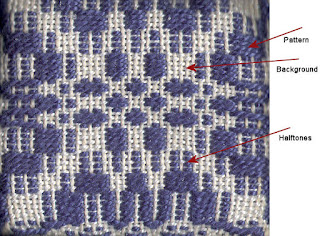The founding of the Coverlet Guild in 1924 was perhaps the logical outcome of an interest in the art and history of weaving that had been developing since the early 1900s, and which intersected with a number of other contemporary movements. Alice’s coverlet collection might be seen as an outgrowth of her interest in the Arts and Crafts Movement (evident in the scrapbook articles she saved from the 1890s) as well as her connections to the Colonial Revival. It also brought her into contact with individuals who were attempting to revive or preserve weaving in Appalachia in an effort to “uplift” mountain women—a project that was itself influenced by the Progressive movement and the settlement houses of Chicago.
 |
| Tools of textile production on display at the Hull-House Labor Museum |
In his 1904 report for the Bureau of Labor, “The Revival of Handicrafts in America,” Max West recorded the activities of dozens of organizations dedicated to reviving hand weaving (mostly in the southern mountains) and rug making (in New England). All were founded by educated, middle- to upper-class women (many of whom had spent time at Hull House or another settlement house) who came to rural communities and worked with local women to revive their craft traditions.
 |
| Women preparing to warp a loom using traditional methods, North Carolina, ca. 1910 |
 |
| Blue Mountain Room, White House |
 |
| Allanstand Industries product display, 1910s |
The founders and managers of weaving centers also hoped that their work would preserve the traditions of weaving. However, the pattens, tools, and materials they used were modern ones, suited for the production of large quantities of textiles for sale in urban markets. Over time, weaving centers tended to shift production from coverlets and other large items to smaller pieces like towels and placemats that required less time and skill. But women did keep weaving (indeed, the Allanstand Craft Shop is still in operation), and the craft centers do seem to have encouraged a greater appreciation for antique textiles, which helped to preserve them and led to the creation of groups like the Colonial Coverlet Guild.
So where do Alice Miner and her coverlet collection fit into this story? We’ll get to that in the next post, when a visitor from the Kentucky mountains pays a visit to the North Country.





